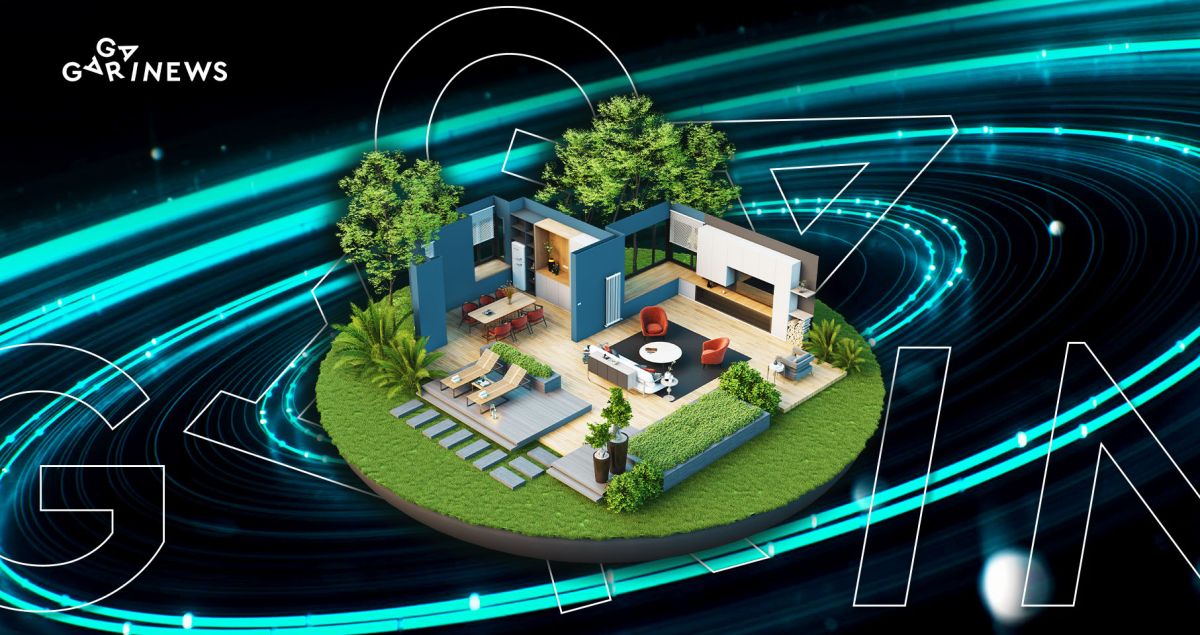What are NFT lands and real estate in metaverses?

Virtual real estate is a type of NFT that grants the user the right to own some land in the metaverse.
On this page
The value of each token is determined by its utility, the virtual world's buildings, the asset class, and other factors.
Many NFT lands are used for more than just gameplay; they are also used for full-fledged work and earnings. In our article, we will go into greater detail about this.
The virtual land mechanism
NFT can be used for more than just the possession of art, a painting, or a piece of music. Non-fungible tokens can be used in a variety of ecosystems thanks to their unique characteristics.
The metaverse is a virtual world with open space and “closed” territories in most cases. These can be rooms on floors, as in the Blocktopia project, or different-sized plots of land, as in The Sandbox, Dalarnia, or Decentraland.
The Sandbox metaverse's game space
The game space enables its owner to interact with the territory they need using their own 3D avatar if they have a specific NFT on their cryptocurrency wallet.
How to make money in the metaverse with digital real estate
There are numerous ways to use your own plots in the metaverse:
● Placement of advertising banners and partnerships with large companies;
● Construction of various establishments and their own spaces to rent out them to other users;
● Organization of virtual shows, conferences, and events;
● Use of NFT-land in the economy of the gameplay of GameFi projects;
● Exchange rate speculation for the purpose of resale.
Many lands in the metaverse are too expensive to buy whole, so they are divided into pieces. If users aren't using their NFTs themselves, they can frequently rent them out to others.
Advantages and disadvantages
NFT fully provides the legal aspect of ownership at the technological level because each token is unique and has its own properties. Good liquidity and increased community interest are additional benefits of NFT lands because they demonstrate that non-fungible tokens are not just a gimmick and can be applied to legitimate economic sectors.
As for the disadvantages, everything here depends on the number of users and the pace of the metaverse’s development. Many projects are still in beta testing, and users are in no hurry to move to the virtual world, because they do not understand its rules. As a result, the cost of virtual real estate is highly volatile, and such investments frequently fail to generate the desired profit for investors.
Where to buy NFT land now?
There are two ways to purchase land in the metaverses: during the project's initial sale (for instance, INO – the Initial NFT Offering), at metaverse portals, or on well-known NFT marketplaces. To do this, you need to have a crypto wallet and cryptocurrency to pay for the transaction.
For instance, choosing a piece of land is the first step in making a purchase in the Sandbox metaverse. Next, you must visit the OpenSea market, where the Ethereum cryptocurrency is needed to buy a piece. Currently, this type of NFT can be purchased for as little as 0.86 ETH ($1,290 at the current exchange rate).
The Sandbox's land selection
Purchasing NFT land via OpenSea
Plots are also available on other reputable marketplaces such as Rarible, Magic Eden, Sorare, and the internal marketplace of Axie Infinity.
Many projects only offer land sales in exchange for their own tokens. As a result, both the native token and the NFT have an application. For example, this is how selling land in Mines of Dalarnia looks like:
Mines of Dalarnia NFT Marketplace
And here is the sale of space stations on the Star Atlas metaverse:
Selling a space station on the Star Atlas marketplace
To sell any purchased property, select the appropriate NFT from your wallet and set the price on the marketplace.
Risks and prospects
You should exercise caution and only visit the official websites of metaverses and trading platforms. Also, keep in mind that any asset purchase is an investment that can result in both profit and loss.
In general, digital real estate appears to be quite promising, given the possibility of incorporating this area into physical world ecosystems.
The content on The Coinomist is for informational purposes only and should not be interpreted as financial advice. While we strive to provide accurate and up-to-date information, we do not guarantee the accuracy, completeness, or reliability of any content. Neither we accept liability for any errors or omissions in the information provided or for any financial losses incurred as a result of relying on this information. Actions based on this content are at your own risk. Always do your own research and consult a professional. See our Terms, Privacy Policy, and Disclaimers for more details.






























